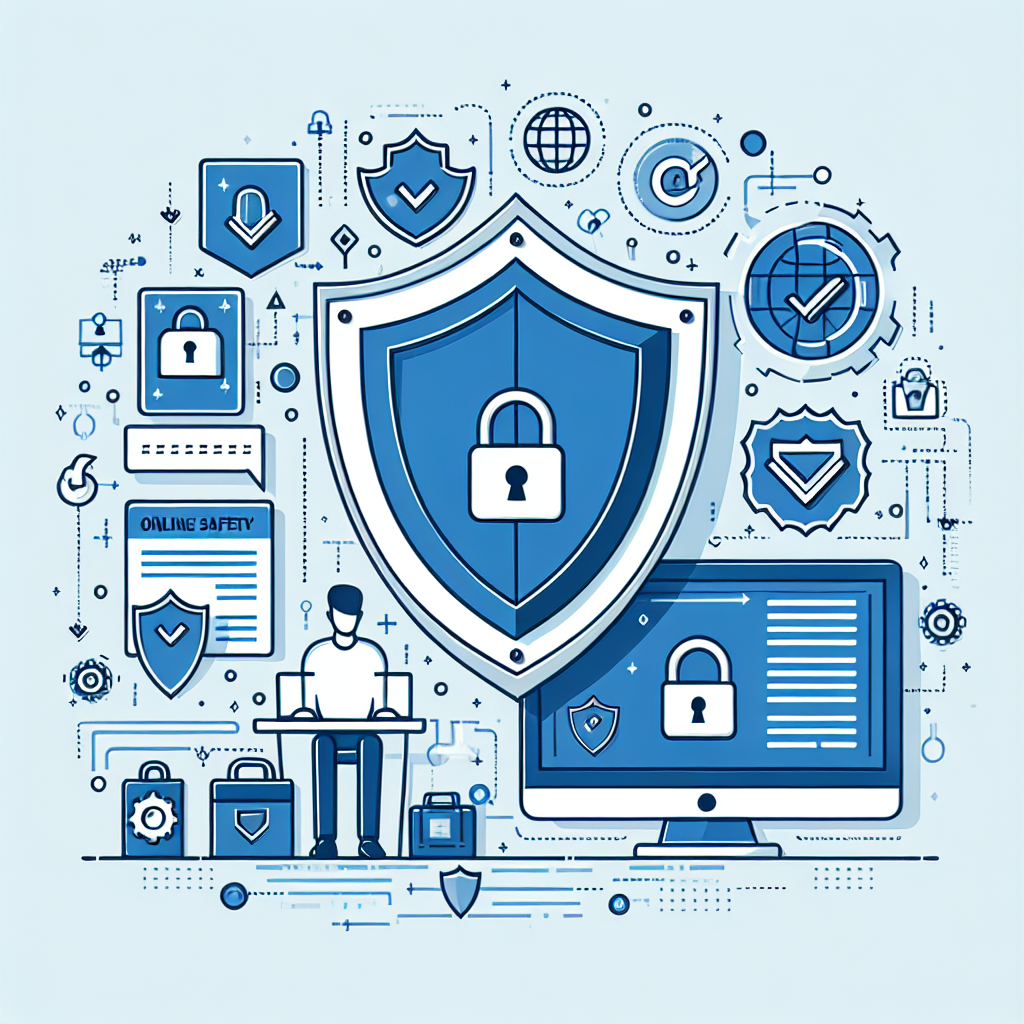Your cart is currently empty!
Tag: Cyber
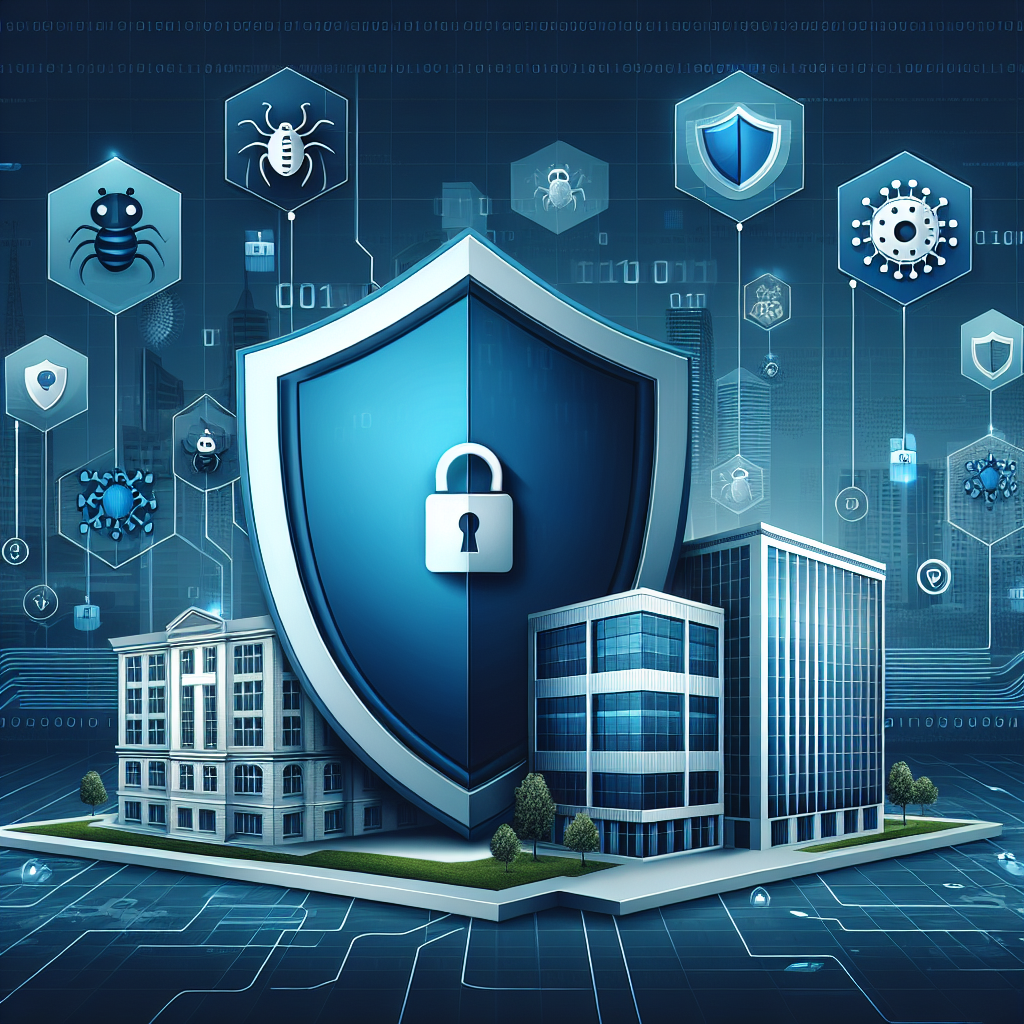
How to Protect Your Business from Cyber Attacks: A Comprehensive Guide to Cybersecurity
In today’s digital age, businesses face an increasing threat of cyber attacks that can compromise sensitive information, disrupt operations, and damage their reputation. It is crucial for business owners to prioritize cybersecurity measures to protect their organizations from these threats. This comprehensive guide will outline key steps that businesses can take to safeguard their systems and data from cyber attacks.1. Conduct a Cybersecurity Assessment: The first step in protecting your business from cyber attacks is to assess your current cybersecurity posture. This includes identifying potential vulnerabilities in your systems, network, and processes. Conducting a thorough assessment will help you understand the specific risks facing your business and develop a targeted cybersecurity strategy.
2. Implement Strong Password Policies: Weak passwords are a common entry point for cyber attackers. Ensure that all employees use strong, unique passwords for their accounts and regularly update them. Consider implementing multi-factor authentication for an added layer of security.
3. Keep Software and Systems Updated: Cyber attackers often exploit known vulnerabilities in software and systems to gain unauthorized access. To mitigate this risk, regularly update all software, applications, and operating systems with the latest security patches and updates.
4. Educate Employees on Cybersecurity Best Practices: Human error is a significant factor in many cyber attacks. Provide comprehensive cybersecurity training to employees to raise awareness of common threats, such as phishing scams and social engineering attacks. Encourage employees to be vigilant and report any suspicious activity immediately.
5. Secure Your Network: Implement robust network security measures, such as firewalls, intrusion detection systems, and encryption, to protect your business’ data and communications. Restrict access to sensitive information on a need-to-know basis and regularly monitor network activity for any signs of unauthorized access.
6. Backup Your Data Regularly: In the event of a cyber attack or data breach, having regular backups of your business’ data is essential for recovery. Store backups securely offsite or in the cloud to prevent them from being compromised in the event of a cyber attack.
7. Develop an Incident Response Plan: Despite your best efforts, cyber attacks can still occur. Develop a comprehensive incident response plan that outlines the steps to take in the event of a security breach. Assign roles and responsibilities to key personnel, establish communication protocols, and test the plan regularly to ensure its effectiveness.
8. Partner with a Managed Security Services Provider: For businesses that lack the resources or expertise to manage cybersecurity internally, partnering with a managed security services provider can provide an added layer of protection. These professionals can help identify and mitigate security risks, monitor for threats, and respond to incidents in a timely manner.
By following these cybersecurity best practices, businesses can enhance their defenses against cyber attacks and safeguard their valuable data and assets. Investing in cybersecurity is not only necessary to protect your business but also to build trust with customers and partners. Stay proactive and stay safe in the digital landscape.

Cybersecurity and MSPs: How Managed Service Providers Can Protect Your Business from Cyber Threats
Cybersecurity is a growing concern for businesses of all sizes, as cyber threats continue to evolve and become more sophisticated. Managed Service Providers (MSPs) play a crucial role in helping businesses protect themselves from these threats and ensure the security of their valuable data.MSPs are third-party companies that offer a range of IT services, including cybersecurity solutions, to businesses. They have the expertise and resources to implement strategies and technologies that can defend against cyber threats and keep businesses safe from attacks.
One of the key ways that MSPs can protect businesses from cyber threats is by implementing robust security measures, such as firewalls, antivirus software, and intrusion detection systems. These tools can help to detect and prevent malicious activity on a company’s network, keeping sensitive data safe from hackers and cybercriminals.
MSPs also provide ongoing monitoring and management of a company’s IT infrastructure, ensuring that any potential security vulnerabilities are identified and addressed promptly. This proactive approach to cybersecurity can help to prevent data breaches and other security incidents that could have a significant impact on a business’s operations and reputation.
In addition to implementing security measures, MSPs can also provide training and education for employees on best practices for cybersecurity. Human error is a common cause of security breaches, so educating staff on how to recognize and respond to potential threats can help to minimize the risk of a cyber attack.
Furthermore, MSPs can help businesses to develop and implement a comprehensive cybersecurity strategy that aligns with their specific needs and requirements. This strategy may include regular security audits, risk assessments, and incident response planning to ensure that the business is prepared to respond effectively to any security incidents that may occur.
Overall, MSPs play a vital role in helping businesses protect themselves from cyber threats and ensure the security of their data. By partnering with an MSP, businesses can gain access to the expertise and resources needed to implement effective cybersecurity measures and defend against the ever-evolving threat landscape. With the right support in place, businesses can rest assured that their valuable data is safe and secure from cyber attacks.

Best Practices for Data Recovery After a Cyber Attack
In today’s digital age, the threat of cyber attacks is ever-present. From ransomware to phishing scams, cyber criminals are constantly finding new ways to infiltrate systems and steal sensitive data. In the event of a cyber attack, it is crucial for businesses to have a solid data recovery plan in place to minimize damage and ensure a quick recovery.Here are some best practices for data recovery after a cyber attack:
1. Backup your data regularly: One of the most important steps in data recovery is to have regular backups of your data. This ensures that even if your system is compromised, you can easily restore your data from a secure backup. Make sure to store your backups in a separate location from your main system to prevent them from being compromised in the event of an attack.
2. Disconnect infected systems: If you suspect that your system has been compromised, disconnect it from the network immediately to prevent the spread of malware. This will help contain the damage and prevent further data loss.
3. Identify the source of the attack: It is important to determine how the attack occurred in order to prevent future incidents. Conduct a thorough investigation to identify the vulnerabilities in your system that were exploited by the attacker.
4. Notify relevant parties: If sensitive data has been compromised in the attack, notify the appropriate authorities and affected individuals as soon as possible. This will help mitigate the damage and prevent further repercussions.
5. Use reputable data recovery services: In some cases, you may need to enlist the help of professional data recovery services to recover lost data. Make sure to choose a reputable provider with experience in handling cyber attacks to ensure a successful recovery.
6. Implement security measures: After a cyber attack, it is important to strengthen your security measures to prevent future incidents. This may include updating software, implementing multi-factor authentication, and conducting regular security audits.
7. Train employees: Educate your employees about the importance of cybersecurity and how to recognize and respond to potential threats. By fostering a culture of security awareness, you can help prevent future cyber attacks.
In conclusion, data recovery after a cyber attack requires a strategic and proactive approach. By following these best practices, businesses can minimize the impact of an attack and ensure a quick and successful recovery. Remember, prevention is always better than cure, so it is important to invest in robust cybersecurity measures to protect your data from potential threats.
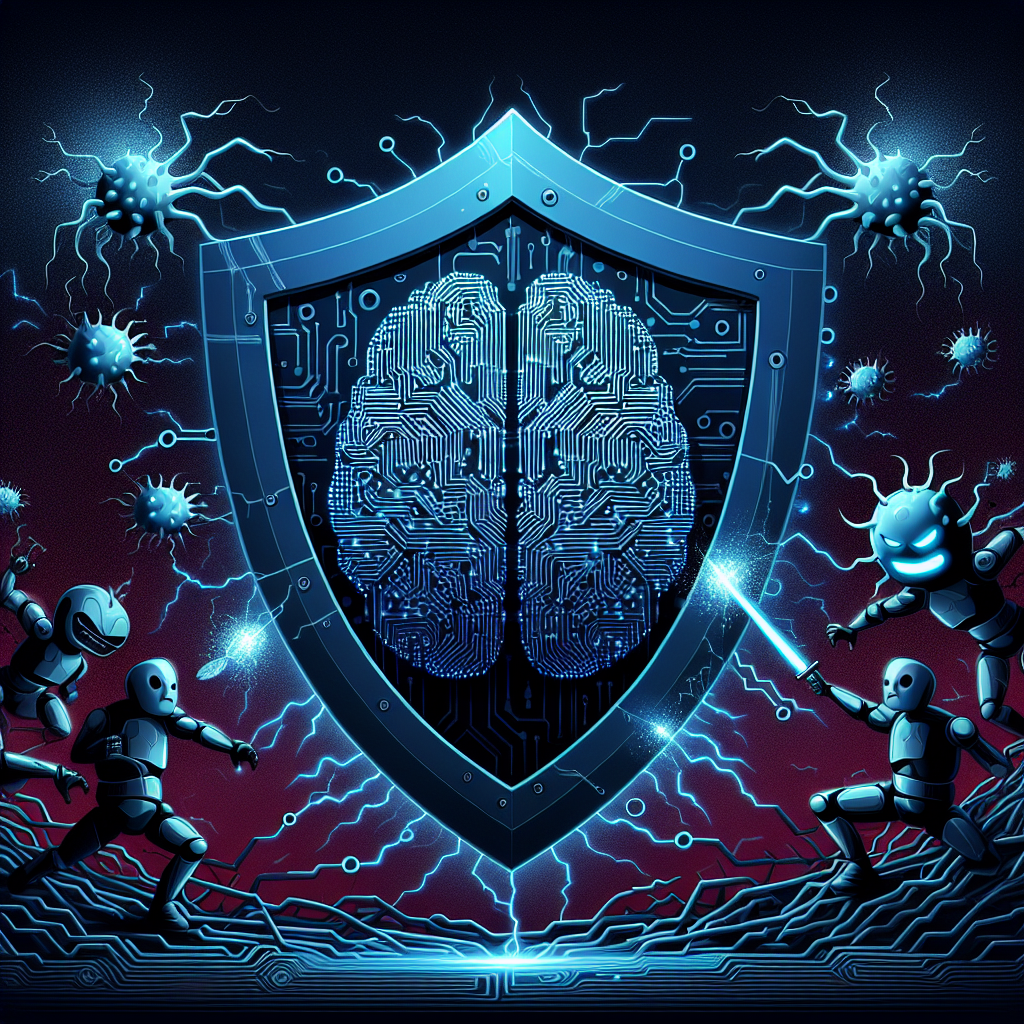
The Role of Artificial Intelligence in Cybersecurity: Enhancing Protection Against Cyber Threats
In recent years, the rise of cyber threats has become a major concern for individuals and organizations alike. With the increasing complexity and sophistication of these threats, traditional cybersecurity measures are no longer sufficient to protect against them. This is where artificial intelligence (AI) comes in, offering a powerful tool to enhance protection against cyber threats.AI has the ability to analyze vast amounts of data at speeds that far surpass human capabilities. This enables AI systems to quickly detect and respond to potential threats in real-time, minimizing the damage that can be caused by cyberattacks. By using machine learning algorithms, AI can also adapt and learn from past incidents, continuously improving its ability to identify and prevent future threats.
One of the key roles of AI in cybersecurity is in threat detection. AI-powered systems can monitor network traffic, analyze patterns, and identify anomalies that may indicate a potential security breach. This proactive approach allows organizations to respond to threats before they escalate, preventing data breaches and other cyber incidents.
AI can also be used for threat hunting, where it actively searches for hidden threats within a network. By leveraging AI’s advanced analytics capabilities, security teams can uncover malicious activities that may have gone unnoticed by traditional security measures. This proactive approach can help organizations stay one step ahead of cybercriminals and prevent potential attacks.
Furthermore, AI can be used to automate routine security tasks, freeing up human resources to focus on more strategic cybersecurity initiatives. This can help improve operational efficiency and reduce the risk of human error, which is often a contributing factor in security incidents.
Despite its many benefits, AI also poses some challenges in cybersecurity. One of the main concerns is the potential for AI systems to be manipulated or exploited by cybercriminals. For example, attackers could use AI algorithms to launch more sophisticated and targeted attacks, making it harder for traditional security measures to detect and respond to them.
To address these challenges, organizations need to implement robust security measures to protect their AI systems from manipulation. This includes implementing strong authentication mechanisms, regularly updating AI algorithms, and monitoring for any suspicious activities that may indicate a breach.
In conclusion, the role of AI in cybersecurity is crucial for enhancing protection against cyber threats. By leveraging the power of AI to analyze data, detect threats, and automate security tasks, organizations can strengthen their defenses and stay ahead of cybercriminals. However, it is important for organizations to remain vigilant and proactive in addressing the potential risks associated with AI in cybersecurity. By implementing strong security measures and staying informed about the latest developments in AI technology, organizations can effectively harness the power of AI to defend against cyber threats.

Best Practices for Protecting Your Business from Cyber Attacks
In today’s digital age, cyber attacks are a growing threat to businesses of all sizes. From data breaches to ransomware attacks, the consequences of a cyber attack can be devastating to a business’s bottom line and reputation. That’s why it’s crucial for businesses to implement best practices for protecting themselves from cyber attacks.One of the most important steps that businesses can take to protect themselves from cyber attacks is to educate their employees about cybersecurity best practices. This includes training employees on how to recognize phishing emails, use strong passwords, and secure their devices. By educating employees about the risks of cyber attacks and how to prevent them, businesses can significantly reduce their vulnerability to these threats.
Another important best practice for protecting your business from cyber attacks is to regularly update your software and systems. Cyber attackers are constantly evolving their tactics, so it’s crucial for businesses to stay one step ahead by keeping their software and systems up to date with the latest security patches and updates. This can help prevent hackers from exploiting known vulnerabilities in outdated software.
In addition to updating software and systems, businesses should also implement strong access controls to protect their sensitive data. This includes limiting access to sensitive information to only those employees who need it, as well as using encryption to protect data both in transit and at rest. By implementing strong access controls, businesses can reduce the risk of unauthorized access to their data.
Regularly backing up data is another important best practice for protecting your business from cyber attacks. In the event of a ransomware attack or data breach, having regularly updated backups of your data can help you quickly recover and minimize the impact of the attack. Businesses should also test their backups regularly to ensure that they are working properly and can be easily restored in the event of an attack.
Finally, businesses should consider investing in cybersecurity insurance to help mitigate the financial impact of a cyber attack. Cybersecurity insurance can help cover the costs of investigating and remediating a cyber attack, as well as any legal fees or fines that may result from a data breach. By having cybersecurity insurance, businesses can have peace of mind knowing that they are financially protected in the event of a cyber attack.
In conclusion, cyber attacks are a growing threat to businesses, but by implementing best practices for cybersecurity, businesses can significantly reduce their risk of falling victim to these attacks. By educating employees, regularly updating software and systems, implementing strong access controls, backing up data, and investing in cybersecurity insurance, businesses can protect themselves from the financial and reputational damage that can result from a cyber attack.
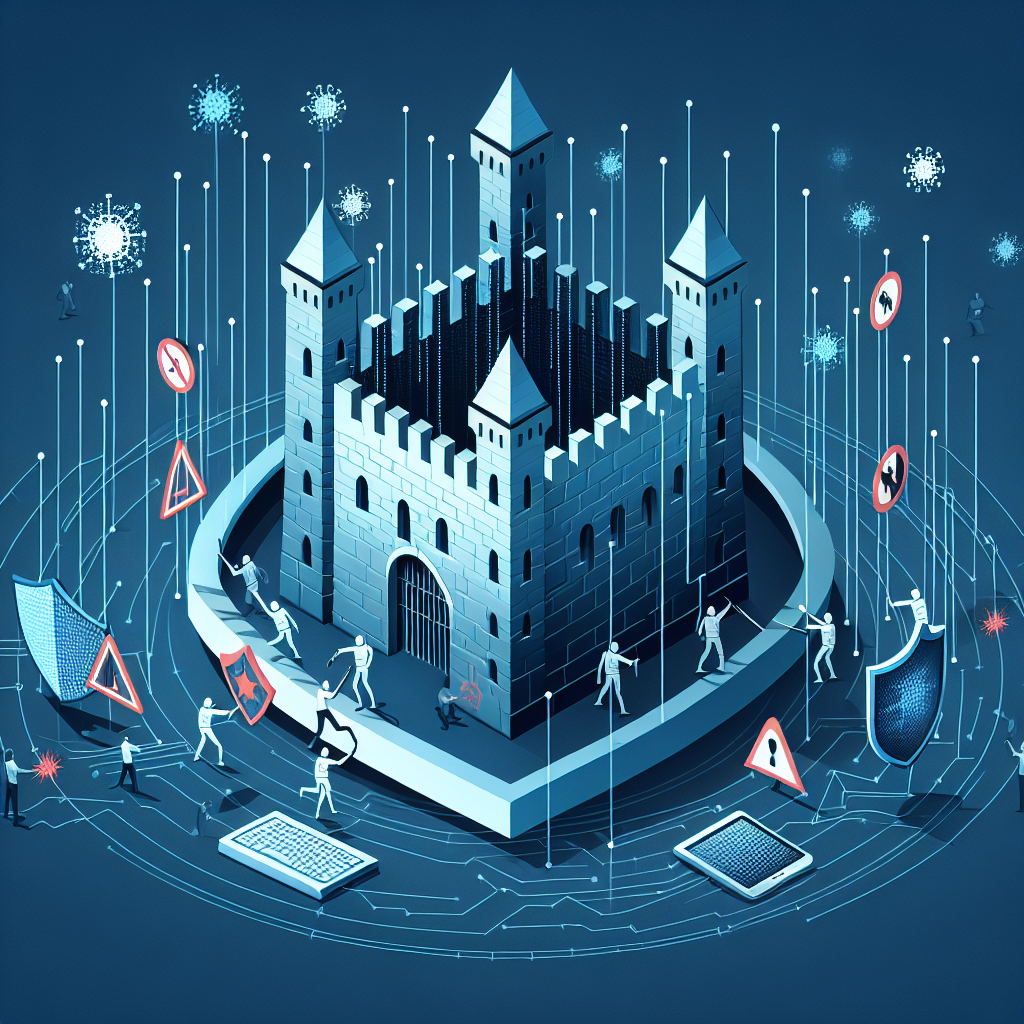
Protecting Your Business from Cyber Attacks: Strategies for Success
In today’s digital age, protecting your business from cyber attacks is more important than ever. With the increasing reliance on technology and the internet for daily operations, businesses are at a higher risk of falling victim to cyber threats. From data breaches to ransomware attacks, cyber criminals are constantly looking for ways to exploit vulnerabilities in your systems.To ensure the safety and security of your business, it is crucial to implement effective strategies to protect against cyber attacks. Here are some key strategies for success:
1. Regularly update your software and systems: One of the easiest ways for cyber criminals to gain access to your business is through outdated software and systems. Make sure to regularly update all of your software, including operating systems, antivirus programs, and firewalls, to ensure that you have the latest security patches and protections in place.
2. Train your employees on cybersecurity best practices: Your employees are often the first line of defense against cyber attacks. Make sure to provide regular training on cybersecurity best practices, such as how to recognize phishing emails, how to create strong passwords, and how to secure sensitive information. Additionally, establish clear protocols for reporting any suspicious activity or security incidents.
3. Implement strong access controls: Limiting access to sensitive data and systems is essential for protecting your business from cyber attacks. Implement strong access controls, such as multi-factor authentication and role-based access, to ensure that only authorized individuals can access sensitive information.
4. Backup your data regularly: In the event of a cyber attack, having a backup of your data is crucial for recovering quickly and minimizing damage. Make sure to regularly backup your data to a secure, offsite location, and test your backups regularly to ensure that they are up-to-date and accessible.
5. Monitor your systems for suspicious activity: Implementing a robust monitoring system can help you detect and respond to cyber threats in real-time. Monitor your systems for any unusual activity, such as unauthorized access attempts or unusual network traffic, and respond promptly to any potential security incidents.
6. Develop a comprehensive incident response plan: Despite your best efforts, it’s still possible that your business may fall victim to a cyber attack. Developing a comprehensive incident response plan can help you respond quickly and effectively to any security incidents, minimizing the impact on your business.
By implementing these strategies for success, you can protect your business from cyber attacks and ensure the safety and security of your sensitive information. Remember, cybersecurity is an ongoing process, so make sure to regularly review and update your security measures to stay ahead of evolving cyber threats.
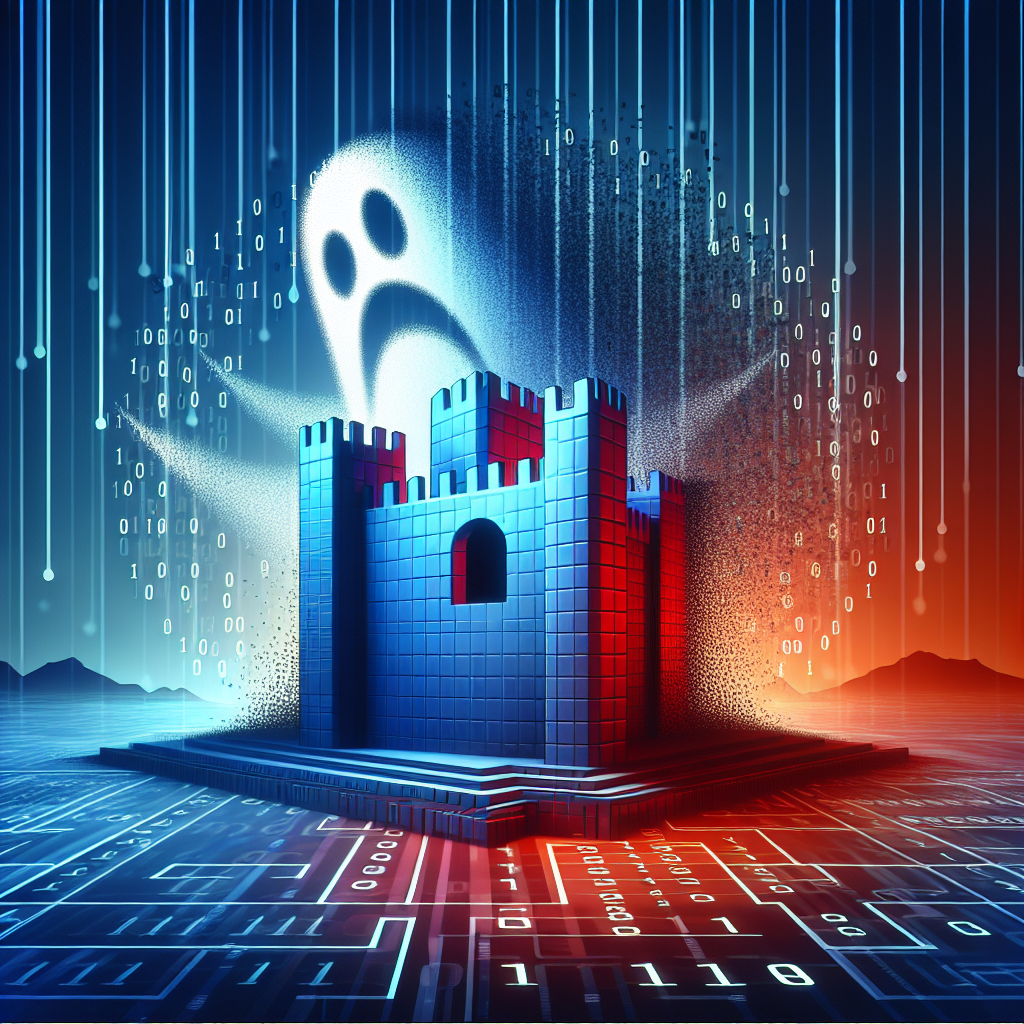
Disaster Recovery in the Age of Cyber Threats: How to Stay Secure
In today’s digital age, businesses face an increasing threat from cyber attacks that can disrupt operations and compromise sensitive data. With the rise of ransomware, phishing scams, and other malicious threats, it’s more important than ever for organizations to have a solid disaster recovery plan in place to protect against potential cyber disasters.Disaster recovery planning involves preparing for the worst-case scenario and ensuring that systems and data can be quickly restored in the event of a cyber attack or other disaster. This includes backing up important data regularly, identifying critical systems and processes, and developing a response plan to address potential threats.
One key aspect of disaster recovery planning is implementing strong cybersecurity measures to prevent attacks from occurring in the first place. This includes using firewalls, anti-virus software, and other security tools to protect against malware and other cyber threats. It’s also important for businesses to train employees on how to recognize and respond to potential security risks, such as phishing emails or suspicious websites.
In addition to prevention measures, businesses should also have a plan in place to respond to cyber attacks if they do occur. This includes having a team of experts who can quickly assess the situation, contain the attack, and restore systems and data as quickly as possible. It’s also important for organizations to regularly test their disaster recovery plans to ensure they are effective and up to date.
Another important aspect of disaster recovery planning is ensuring that data backups are secure and easily accessible in the event of a cyber attack. This includes storing backups in a secure offsite location, such as a cloud-based storage service, and regularly testing the backups to ensure they can be quickly restored in the event of a disaster.
Overall, disaster recovery planning is essential for businesses to protect against cyber threats and ensure they can quickly recover from potential disasters. By implementing strong cybersecurity measures, developing a response plan, and regularly testing backups, organizations can stay secure in the age of cyber threats and protect their operations and data from potential harm.

The Cost of Cyber Attacks: Why Investing in Cybersecurity is Crucial
The Cost of Cyber Attacks: Why Investing in Cybersecurity is CrucialIn today’s digital age, cyber attacks have become a major threat to businesses of all sizes. From small startups to large corporations, no one is safe from the potential damage that can be caused by a cyber attack. These attacks can result in financial losses, damage to reputation, and even legal consequences. That’s why investing in cybersecurity is crucial for any organization looking to protect itself from these threats.
One of the biggest costs associated with cyber attacks is financial loss. According to a report by IBM Security, the average cost of a data breach in 2020 was $3.86 million. This includes expenses such as investigating the breach, notifying affected customers, and implementing security measures to prevent future attacks. For small businesses, the cost of a cyber attack can be even more devastating, with some estimates suggesting that 60% of small businesses that suffer a cyber attack go out of business within six months.
Aside from financial losses, cyber attacks can also have a significant impact on a company’s reputation. A data breach can erode customer trust and loyalty, leading to a loss of business and damage to the brand’s reputation. In today’s interconnected world, news of a cyber attack spreads quickly, and customers are quick to abandon companies that fail to protect their personal information.
Furthermore, failing to invest in cybersecurity can also lead to legal consequences. Many industries have strict regulations in place regarding the protection of sensitive data, such as the Health Insurance Portability and Accountability Act (HIPAA) for healthcare organizations and the General Data Protection Regulation (GDPR) for companies operating in the European Union. Failing to comply with these regulations can result in hefty fines and legal action.
Given the high costs associated with cyber attacks, investing in cybersecurity is essential for any organization looking to protect itself from these threats. This includes implementing robust security measures such as firewalls, antivirus software, and encryption, as well as conducting regular security audits and employee training to ensure that everyone in the organization is aware of best practices for avoiding cyber attacks.
Ultimately, the cost of investing in cybersecurity is far outweighed by the potential costs of a cyber attack. By taking proactive measures to protect their data and systems, businesses can safeguard themselves against the financial, reputational, and legal consequences of a cyber attack. In today’s digital world, cybersecurity is not just an option – it’s a necessity.
Cyber Acoustics Stereo USB Headset (AC-5008A), in-line Controls for Volume & Mic Mute, Adjustable Mic Boom for PC & Mac, Perfect for Classroom or Home
Price:$24.99– $19.99
(as of Jan 30,2025 02:11:08 UTC – Details)From the brand




Cyber Acoustics was founded in 1996 with the mission of making great audio products. Today, as the world of learning and work continues to evolve, we remain a leading EdTech provider, and have also expanded our product line to include office essentials like laptop docking stations, speakerphones, Zoom-certified webcams, and premium headsets. Whether you need quality tech for learning, working, or having fun, we make products for modern life.


EdTech built to last
Headsets designed for the most demanding classrooms.
Education Headsets


Office tech for any workspace
CA Essentials has professional headsets, speakerphones, webcams, laptop docking stations, and speakers for all your office needs.
Office


Speakers for every setup
From space-saving monitor-mounted soundbars to 2.0 and 2.1 speaker systems, we have what you need for work and fun.
Computer Speakers
Why do we love what we do?
We make products that facilitate modern life. Whether it’s our EdTech headsets used daily by thousands of K-12 students, our CA Essentials products that help people do their jobs, or any of our speakers, headphones, headsets, or webcams that people use to enjoy their down time, we are there for all of it.
What is your company mission?
Provide high-quality, affordable, reliable products with a focus on the customer.
What problem are we solving?
We make simple, reliable, affordable products for everyday uses like school, work, and recreation.


Sustainability
Our new packaging is made from 100% recyclable materials with no single-use plastics or flashy dyes.
Ideal Stereo Headset: Padded earcup and headband with in-line control on cable for easy access to control audio volume. Unidirectional microphone minimizes unwanted noise. Microphone only picks up sound from a specific side or direction of the microphone minimizing ambient noise while speaking or recording. Perfect for K12 classrooms or home.
Universal Fit: With an adjustable microphone boom mic, headband and leatherette ear pads, this headset can be adjusted to fit most head sizes. Designed to be worn with the microphone boom on the left- or right-hand side.
Durable Design: Adjustable headband with easy to clean leatherette earpads. Headset and tangle free braided TuffCord cable designed for hard wearing and to be long lasting.
Easy to Use: Simply plug in and play, no installation needed. Connect directly to your Mac or PC via USB.
Includes: Cyber Acoustics AC-5008 USB Headset and User Guide. Includes 1 year hassle free warranty. Please also refer to the Setup video as shown in the thumbnail images for additional help in setting up or adjusting the audio settings. Our US based customer service team is here to help. Contact us through Amazon.Customers say
Customers find the headphones offer good quality, functionality, and value for money. They mention that the headset is comfortable, works well, and provides good value for the price. However, some customers have mixed opinions on sound quality, comfort, durability, fit, and mic quality.
AI-generated from the text of customer reviews
Looking for a reliable and high-quality headset for your classroom or home office? Look no further than the Cyber Acoustics Stereo USB Headset (AC-5008A)!This headset is perfect for online meetings, virtual classrooms, or just enjoying your favorite music or podcasts. With in-line controls for volume and microphone mute, you can easily adjust the settings without having to fumble with your computer or device.
The adjustable microphone boom allows you to position the microphone exactly where you need it for clear communication. Plus, the comfortable ear cushions and adjustable headband ensure a perfect fit for hours of wear.
Compatible with both PC and Mac, this headset is versatile and easy to use. Whether you’re teaching a virtual class, participating in a conference call, or just chatting with friends, the Cyber Acoustics Stereo USB Headset is the perfect choice.
Don’t settle for subpar audio quality – invest in the Cyber Acoustics Stereo USB Headset (AC-5008A) for crystal-clear sound and reliable performance.
#Cyber #Acoustics #Stereo #USB #Headset #AC5008A #inline #Controls #Volume #Mic #Mute #Adjustable #Mic #Boom #Mac #Perfect #Classroom #Home,pc & mac
